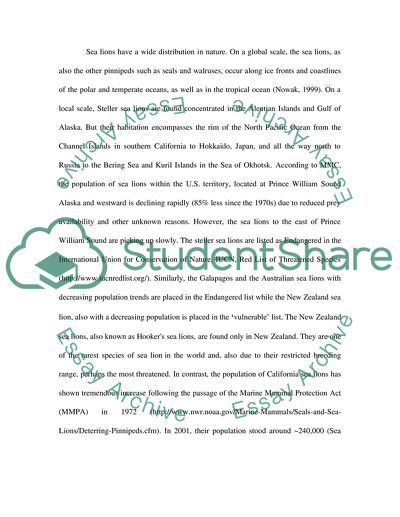Cite this document
(The Sea Lions: Gregarious, Vocal and Intelligent Research Paper, n.d.)
The Sea Lions: Gregarious, Vocal and Intelligent Research Paper. Retrieved from https://studentshare.org/environmental-studies/1736182-behavior-of-sea-lions
The Sea Lions: Gregarious, Vocal and Intelligent Research Paper. Retrieved from https://studentshare.org/environmental-studies/1736182-behavior-of-sea-lions
(The Sea Lions: Gregarious, Vocal and Intelligent Research Paper)
The Sea Lions: Gregarious, Vocal and Intelligent Research Paper. https://studentshare.org/environmental-studies/1736182-behavior-of-sea-lions.
The Sea Lions: Gregarious, Vocal and Intelligent Research Paper. https://studentshare.org/environmental-studies/1736182-behavior-of-sea-lions.
“The Sea Lions: Gregarious, Vocal and Intelligent Research Paper”, n.d. https://studentshare.org/environmental-studies/1736182-behavior-of-sea-lions.


